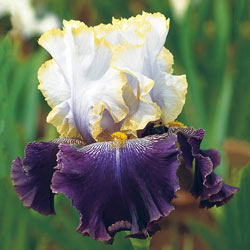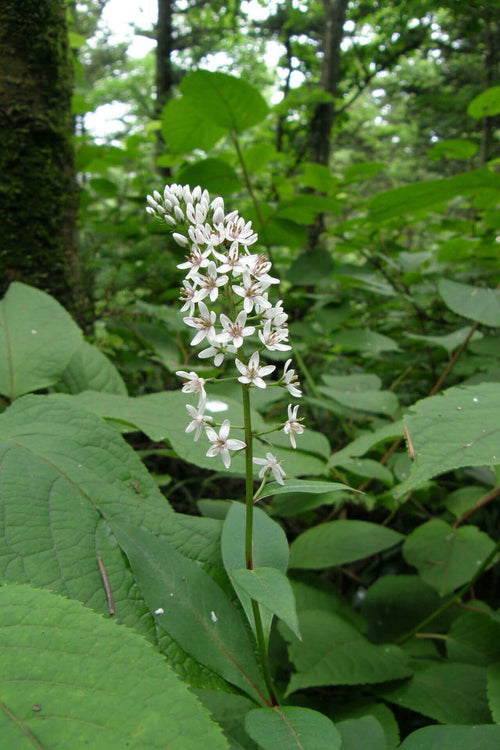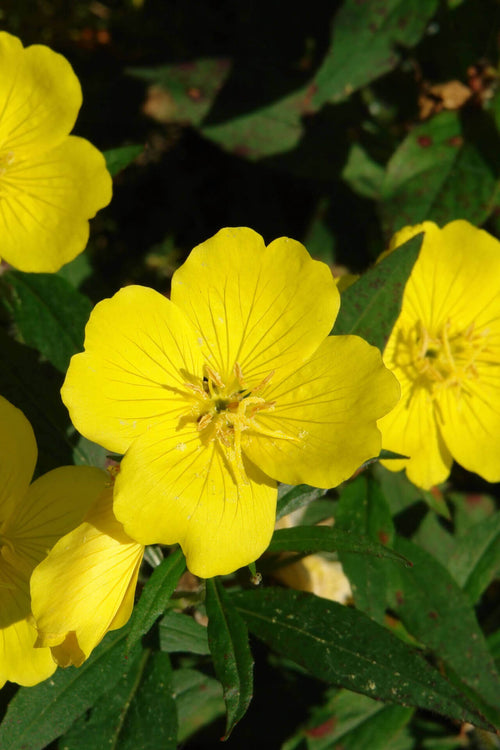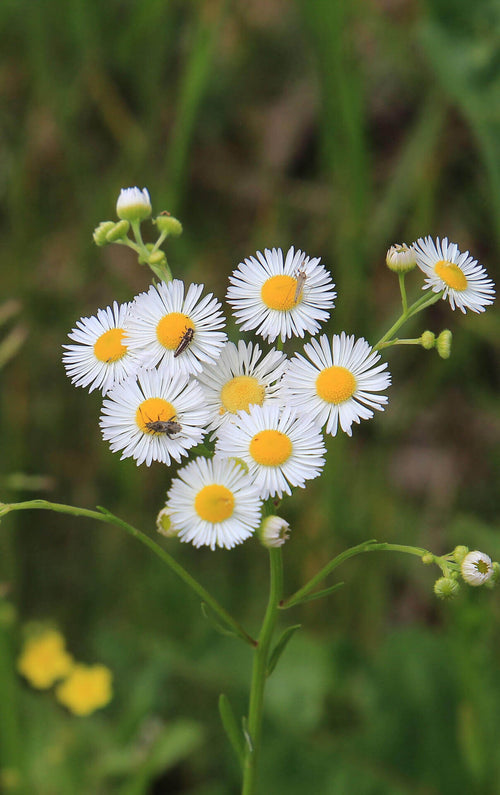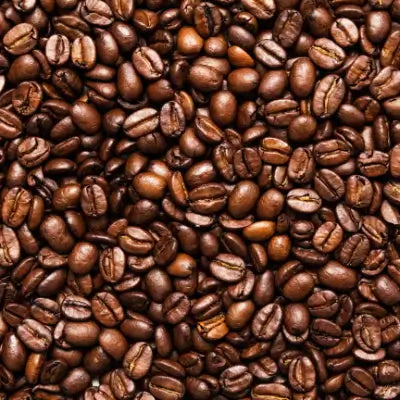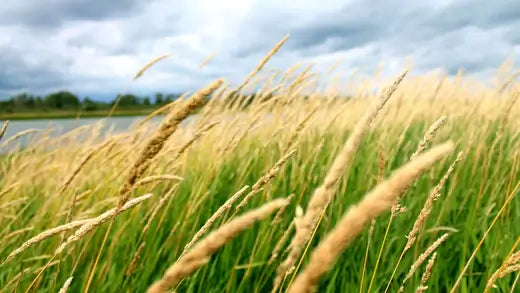Spring is coming. It is time to plan the perennials you want to add to your landscape this year. Here are ten of our favorite blooming perennials that are vibrant and colorful enough for any flower bed.
Oxeye Daisy (Leucanthemum Vulgare)
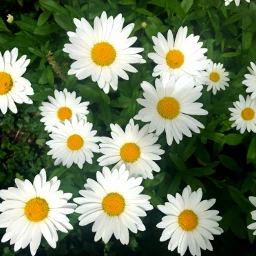
Oxeye Daisies are native to Europe but have been in the United States for centuries. They are brilliant white with yellow centers. These flowers quickly grow and thrive in sun and shade or full sun. They require supplemental water to survive in full sun. Oxeye Daisies are tolerant of drought, heat, and poor soil. Water them an inch a week during periods of drought and extreme heat. They attract butterflies and resist deer and rabbits. Oxeye Daisies have a pleasing floral scent with spicy notes but are not overpowering. They make excellent cut flowers to bring the scent of the outdoors into your home.
| Zone | Height | Width | Light Needs | Bloom |
| 3-9 | 3-4 feet | 2-4 feet | Mix of sun/shade | June-August |
Butterfly Weed (Asclepias tuberosa)
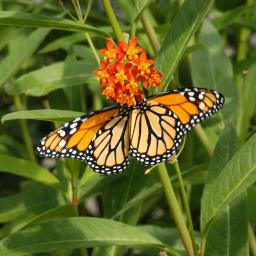
Butterfly weed is native to the United States. This plant has bright orange flowers all summer to brighten up any garden. Butterfly weed attracts butterflies, hummingbirds, and other pollinators. It doesn’t just attract butterflies but is a type of milkweed that attracts and feeds Monarch butterflies. Monarchs are considered endangered, so planting butterfly weeds can help them. Butterfly weed will grow almost anywhere in the United States. It needs deadheading, may self-seed, and may need occasional aphid control. As a bonus, the seed pods are attractive and are often used in crafts or flower arrangements. Butterfly weed is drought and heat tolerant and resists deer and rabbits.
| Zone | Height | Width | Light Needs | Bloom |
| 3-9 | 1-2.5 feet | 1-1.5 feet | Full Sun | June-September |
Shasta Daisies (Leucanthemum × superbum)
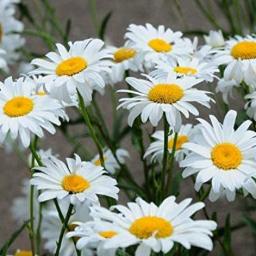
Shasta Daisies have white petals with blueish-purple tips and a yellow center. The foliage and stem are bright, glossy green. They require well-drained soil and are easy to care for. Native to Europe, they grow over a wide range of the United States. These plants form clumps that spread slowly and can be divided every two to three years. Shasta daisies are cold and hardy and need to be fertilized twice a year. Deadheading the spent blossoms will increase the number of blooms your plant makes. Shasta daisies make excellent cut flowers for a vase or bouquet. They attract bees and other pollinators. Foam Flower goes really well with this plant!
| Zone | Height | Width | Light Needs | Bloom |
| 5-9 | 1-3 feet | 2-3 feet | Full Sun | June-September |
Trumpet Vine (Campsis radicans)

The trumpet vine has showy 3-4-inch-long trumpet-shaped orange flowers on a light green woody vine. The darker green leaves make a nice contrast to the stem and bright flowers. A native vine in the southeastern United States, the trumpet vine grows in many parts of the United States. Aerate the soil and fertilize twice a year for optimum growth. Trumpet vines are drought and heat-resistant and bounce back from colder winters. They attract butterflies, hummingbirds, and other pollinators. This vine is excellent for covering a fence or an arbor. You will need to prune it to control aggressive growth. Trumpet vines are deer resistant.
| Zone | Height | Width | Light Needs | Bloom |
| 4-9 | 20 feet | 40 feet | Full Sun | June-September |
Bearded Iris (Iris x germanica)
The bearded iris has blue-violet or showy purple flowers on tall green stalks. The leaves are green and provide a great contrast to the flowers. The plant is native to the Mediterranean but grows over most temperate United States. Bearded irises grow in clumps and must be divided every 3-5 years in the late summer to maintain the flower color, or they will become white. They make excellent cut flowers and are recognized as Tennesse’s state-cultivated flowers. Bearded irises need well-drained soil as they do not like wet feet. Use a low-nitrogen fertilizer to avoid soft rot. This iris is very drought tolerant. When the flowers are spent, remove the flower stalk, so the plant doesn’t waste energy on seed formation.
| Zone | Height | Width | Light Needs | Bloom |
| 3-9 | 1-3 feet | 2-3 feet | Likes morning sun/afternoon shade | Spring |
Evening primrose (Primula vulgaris)
Click Here to find the product
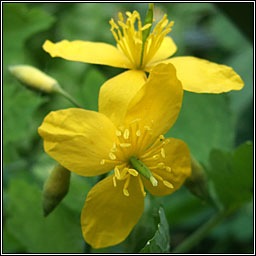
Evening primroses are pale yellow flowers with a darker yellow center. They open in the evening and are open all night. During the day, they are closed. Evening primroses are native to Asia, northern Africa, and Europe around the Mediterranean. They form a green border with 6–8-inch leaves in a rosette pattern during the day. At night, the flowers attract nighttime moths and early morning bees. Evening primroses need well-drained but moist soil. They prefer dappled sunlight or partial shade. Fairly drought tolerant, these flowers thrive with a twice-yearly fertilization and a drink during prolonged drought.
| Zone | Height | Width | Light Needs | Bloom |
| 4-8 | 3-6 inches | 4-8 inches | Dappled light/partial shade | March -August |
Asters (Symphyotrichum)
Asters are native to the United States. They are an excellent ground cover in many colors, from white to purple, with vibrant yellow centers. Asters attract butterflies and pollinators and can provide a vital late-season nectar source. Asters are usually grown from nursery transplants as seedlings take several years to mature. They like sandy loam soils that have a pH of 5.8-6.5. The roots like to spread out, so give them some room when planting. Fleabane Daisy is the twin to this plant.
| Zone | Height | Width | Light Needs | Bloom |
| 3-9 | 8 inches-8 feet | 2-4 feet | Full sun | Summer-Fall |
Wild Geranium (Geranium Maculaturm)
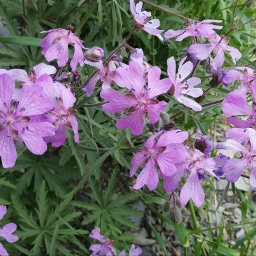
Wild Geraniums are native to the forests of the eastern United States. They are usually rose-pink to lavender but are sometimes deep purple or white. The petals have slightly darker lines down the length of the petal. The leaves are five-lobed and have irregular margins. They are dark green. Wild Geraniums are easy to care for and drought tolerant. They need sun and the occasional dose of fertilizer with minimal water during dry spells. They spread quickly into a mound of plants. In addition, wild Geraniums attract butterflies, hummingbirds, and bumblebees.
| Zone | Height | Width | Light Needs | Bloom |
| 3-8 | 12-28 inches | 12-18 inches | Full Sun/Light Shade | Late Spring-Early Summer |
Black-eyed Susan (Rudbeckia hirta)

Black-eyed Susan, native to the eastern United States but has spread throughout North America. The flowers have a large black center surrounded by rays of yellow flowers. The leaves are green with a serrated edge. This plant is a biennial, meaning it completes its life cycle in two years. However, it will come back season after season because it self-seeds. Black-eyed Susan attracts butterflies, bees, and other pollinators. Small mammals and birds eat the seeds in the fall. The plants are moderately tolerant to drought and salt and moderately deer resistant.
| Zone | Height | Width | Light Needs | Bloom |
| 3-10 | 3-4 feet | 1-2 feet | Full Sun | Mid-Summer to Mid-Fall |
Purple coneflower (Echinacea purpurea)
![]()
Purple coneflower is native to the central and eastern United States. It prefers well-drained, moist loam but will live in other soils. Once established, purple coneflowers are drought tolerant and are heat, deer, rabbit, and salt resistant. Flowers have a round brown dome head surrounded by pink, lavender, or purple petals. The leaves are rough to the touch and dark green. Purple coneflowers attract butterflies and other pollinators. Birds eat the seeds in the fall. The petals are dried and used to make tea to treat colds. When the leaves are crushed, they emit a fresh, daisy-like fragrance.
| Zone | Height | Width | Light Needs | Bloom |
| 3-8 | 3-4 feet | 1-2 feet | Full Sun/Partial Shade | Early Summer-Mid Fall |

